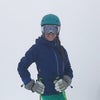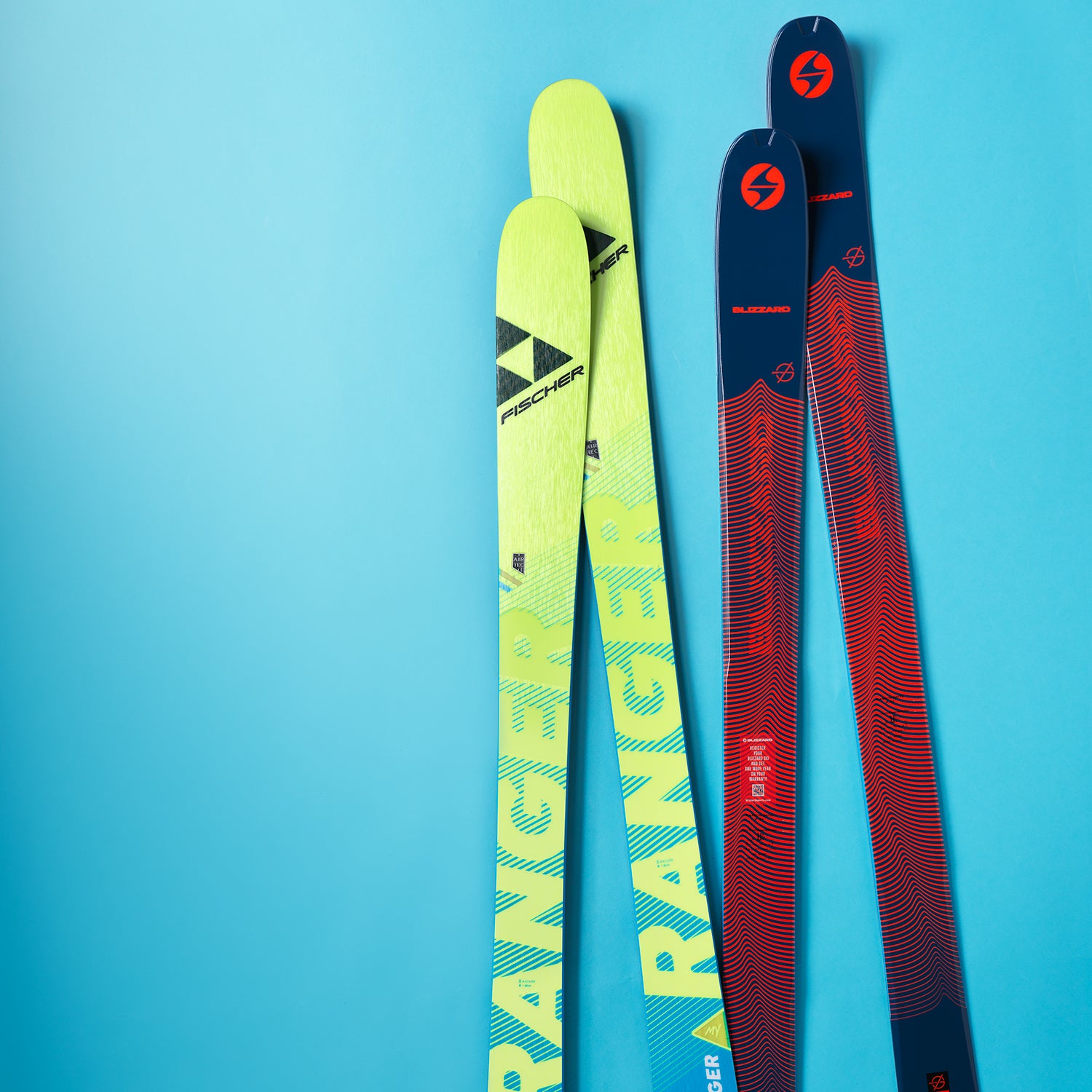Nordica Enforcer 104 Free ($850)
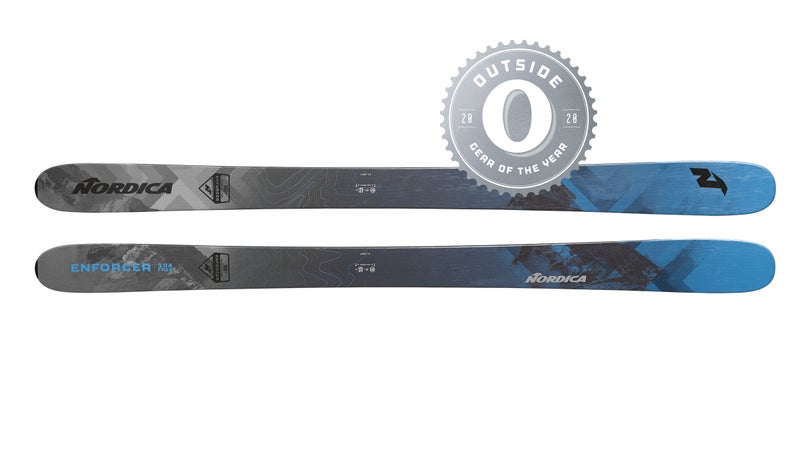
Technically, the Enforcer 104 Free is only four millimeters wider than Nordica’s much loved Enforcer 100—a negligible difference on paper, and often enough on snow. But even as skis between 104 and 106 millimeters underfoot have become our favorite daily drivers out west, there’s way more to the new Enforcer 104 than its middle spec. Typically, skis at this width are either burly planks that excel on firm snow or slashers better suited to off-trail riding in dry powder. Versatility is hard to come by. That’s not the case with this Enforcer. For Nordica’s designers, it was all about boosting playfulness without sacrificing power. To give the 104 a lighter, looser feel, Nordica added wood at the tip and tail. A combination of beech and poplar, that wood displaces much of the ABS material—the plastic you see in quality sidewalls—that Nordica traditionally placed up front to diminish vibration. In our test, the ski felt way nimbler and more surfy when entering and exiting turns than any Enforcer to date. And the drop in weight made it easier to pivot in powder. When you’re blasting at speed on-trail or off, the 104 performs like the stout Austrian ski it is. But in tight trees, weird alpine snow, or chopped up mank, it’s far easier to smear and unweight. A new carbon-fiber chassis further strips weight versus traditional fiberglass. “This ski rips everything,” said a tester. “Nordica nailed it. I’d ski it almost every day in Utah, Tahoe, or Colorado.” 135/104/124
Völkl Kenja 88 ($775)

All-Mountain Frontside: Best for Women
Völkl introduced the tester-favorite Secret 92 last season—and gave notice that the storied German brand was back on its game. This year the all-new Kenja 88 incorporates the same Titanal frame with carbon tips and full sidewall construction. The takeaway? Performance junkies will love the traditional feel when they’re going all out—it holds like a Völkl of old. But back off the ski and you realize how effortless the new construction is to ride. It’s simple to vary the turn shape—we found you could open up the Kenja for GS arcs and then bank it into slalom turns with barely a nudge. And while rocker is minimal, what’s there eases smearing, adds float on light powder days, and offers easier turn initiation the rest of the time. “It’s a grip-it-and-rip-it stick for the front side of many western resorts,” one tester remarked, and an all-condition superski for eastern ladies. 129/88/111
Rossignol Experience 88 Ti ($750)
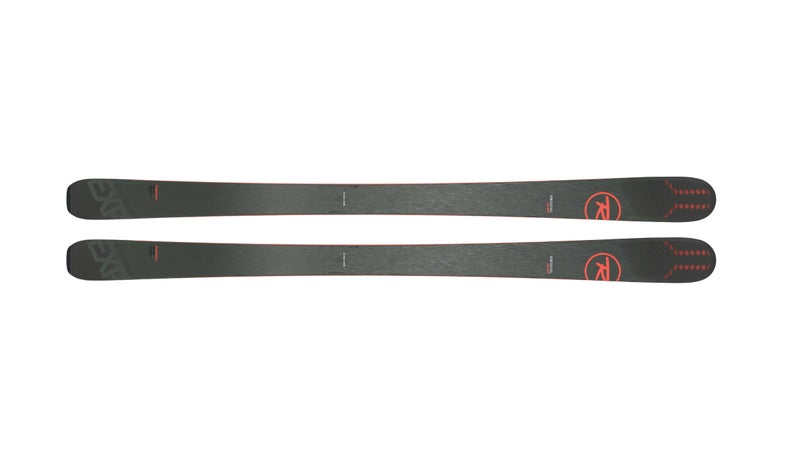
All-Mountain Frontside: Best for Men
Unlike Rossignol’s Black Ops, the Experience 88 Ti is loaded with techy features, including weight-saving “air tips,” courtesy of a honeycomb polymer in the nose, and strips of material embedded in the core to boost power. Sure enough the 88 Ti shredded harder than any ski we tested in its category. And because it requires no extra thinking to navigate and returns as much power as you give it, it works well for a huge range of skiers, from intermediates to former pros. The edge hold rivals even some race skis. Off-trail it’s nimble and able to smear in bumps and chalky chutes. You barely notice it when you’re transitioning from groomed terrain to loose alpine snow. “How can a ski with no speed limit be this forgiving and playful when you’re relaxing?” wondered a tester. “It’s the most versatile I’ve ever ridden.” 127/88/117
Head Kore 93 W ($750)
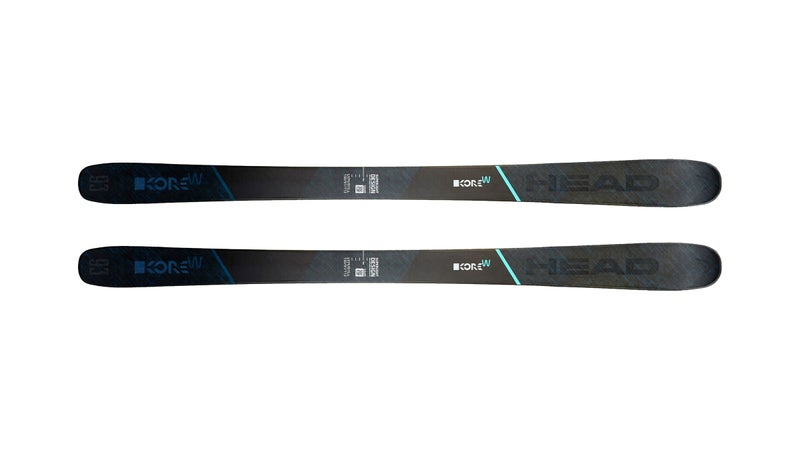
All-Mountain: Best for Women
“Quiet,” “superb snow feel,” “strong underfoot,” and “clean turner” were just a few of the accolades our women’s test team bestowed on the Kore 93 W. It’s a testament to the ski’s versatility, credit for which goes to the superb materials. First: the Koroyd, a honeycomb copolymer that shaves weight and dampens the ride. And we have to acknowledge Head’s famous graphene, the lightest, thinnest, strongest material in existence. It amplifies feel and rivals heftier metals when it comes to quieting chatter. On the hill, testers raved about the Kore 93 W’s glued-to-the-snow edge grip at any speed. We do have one caveat: the ride is so muted that it can feel dead at times. The fix? Ski faster. “The more you push it, the more it boosts confidence,” said one tester. 130/91/113
Rossignol Black Ops 98 ($800)
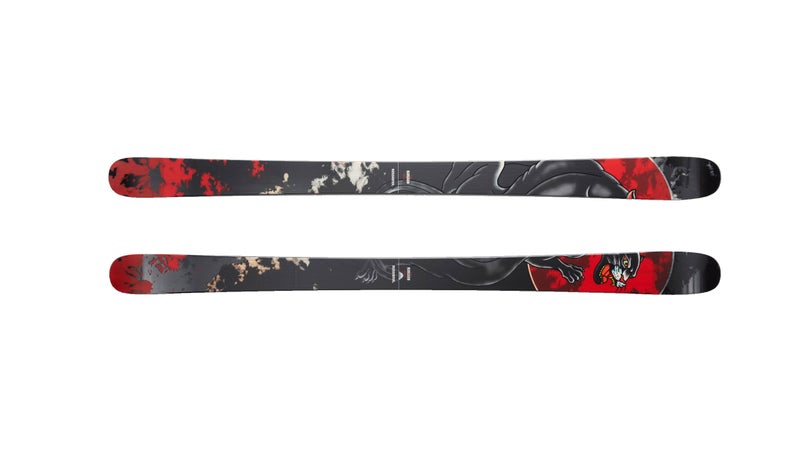
All-Mountain: Best for Men
Saving weight isn’t the be-all, end-all in ski construction. Sure, skis featuring supermaterials like Koroyd and graphene often goose the fun factor. But those with a vertically laminated wood core topped by metal also rip. Case in point, Rossi’s Black Ops 98. Fittingly, many of the specs have been redacted. But we do know that it’s made of wood and metal. We also know it outperformed every ski in our all-mountain test. It’s hardy but fun, with bomber edge hold, and shone equally on hard groomers and in off-trail terrain. “The mass and power of the ski are confidence inspiring, but it’s no beast,” said a tester. “The turn shape and flex pattern are open to many skiing styles.” 131/98/121
Nordica Santa Ana 110 ($900)
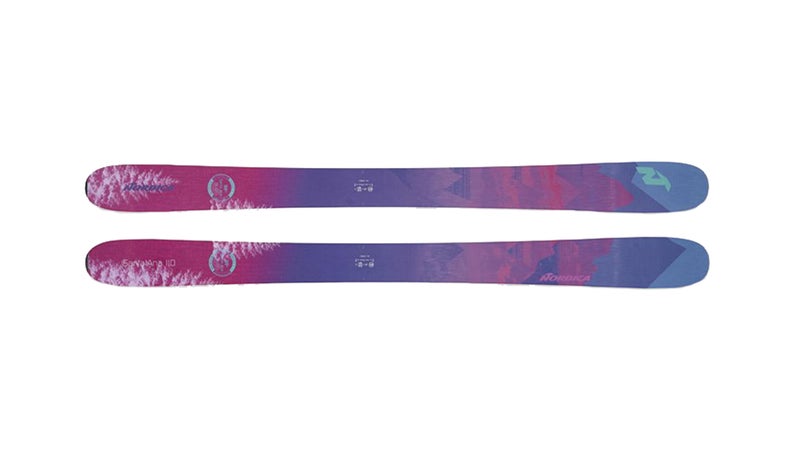
All-Mountain Powder: Best for Women
The Santa Ana is the Enforcer 104’s big sis-ter. Whereas the 104 is built for everyday western skiing, the 110 is more about going full throttle with your hair on fire in a whiteout. Featuring a more playful flex than the 104, the 110 is burly but not overbearing. In fact, it’s surprisingly nimble given how fat it is. Women testers praised it for its slow-speed handling as much as its redlined charging. But it’s still a capable ski on an expert’s feet, with carbon and metal layers and a balsa core that saves weight and cancels turbulence, making it easy on the legs. “It smooths out chunder and delivers a velvety ride,” said a smaller tester. “And it turns at any speed.” Pronounced rocker at the tip and tail make it surfy in uncut stashes, while camber underfoot livens up demeanor and broadens the sweet spot. Get used to the extra waist width (you have to really drop the hip to fully engage the sidecut) and the trenches you leave will put the snowcats on alert. 139/110/128
Salomon QST 106 ($900)
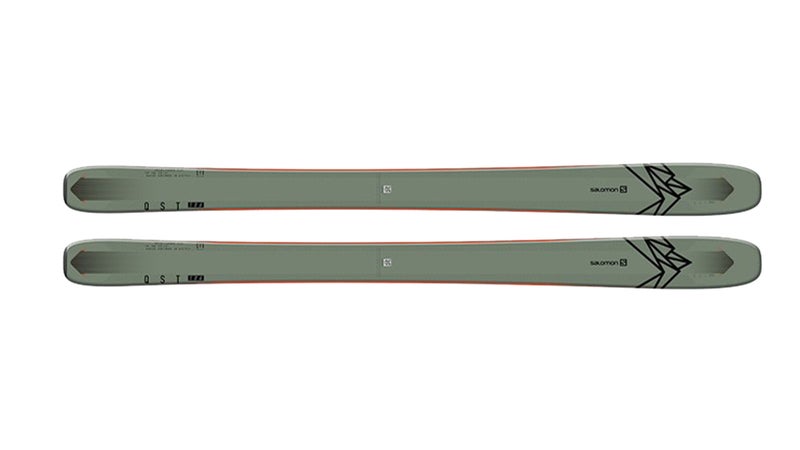
All-Mountain Powder: Best for Men
Nordica won our Gear of the Year award by taking a burly ski and making it more playful. Salomon earns runner-up status by making a playful ski more powerful. The previous QST 106 was light, deft, and beloved by resort powder skiers, who relished its effortless turn initiation in all conditions and silky yet dampened ride. In a quest for more power and stability, other brands have destroyed perfectly enjoyable skis by adding too much material. Not so with the QST. Infusions of carbon, flax, and basalt, plus an inspired application of vibration-eating cork in the tips, amped up straight-line stability without sacrificing that loose feel. If you’re more of a slasher but still want the ability to charge on demand, give this ski a try. Even our biggest and fastest off-trail tester was impressed. “Great feel in powder,” he said. “It’s pivoty and floaty, but now it’s stout enough to stand on when you’re really hauling.” 137/106/123
Fischer My Ranger 102 FR ($700)
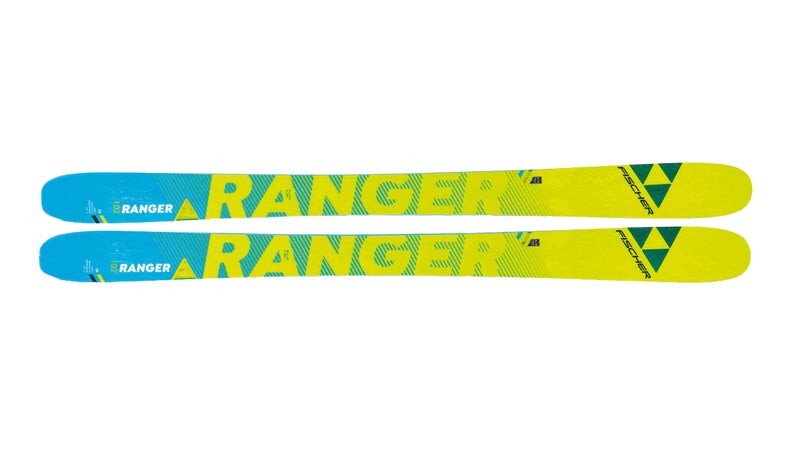
Backcountry: Best for Women
As skis have become lighter, designated resort planks increasingly serve double duty as backcountry skis. This is especially true now, in the age of Shift (Atomic and Salomon) and Kingpin (Marker) bindings that ski as well in-bounds as they do out. Fischer’s My Ranger 102 FR checks many boxes for those who venture mostly off-piste but still ride lifts on occasion. At 1,850 grams, it’s about a pound heavier than a pure backcountry ski at this width, but the full-figured silhouette and ample rocker mean it’s perfectly suited for charging in unconsolidated or just plain weird snow. The My Ranger surfs billowy mounds on the best of days and seamlessly crosses over to a supersize GS carver. Layers of laminated wood run the length of the ski for predictable yet firm flex, while a carbon nose makes turning easier and prevents dives. “Forgiving in crud and fun in pow, it rails big turns, too,” raved a tester. 135/101/125
Blizzard Zero G 105 ($960)
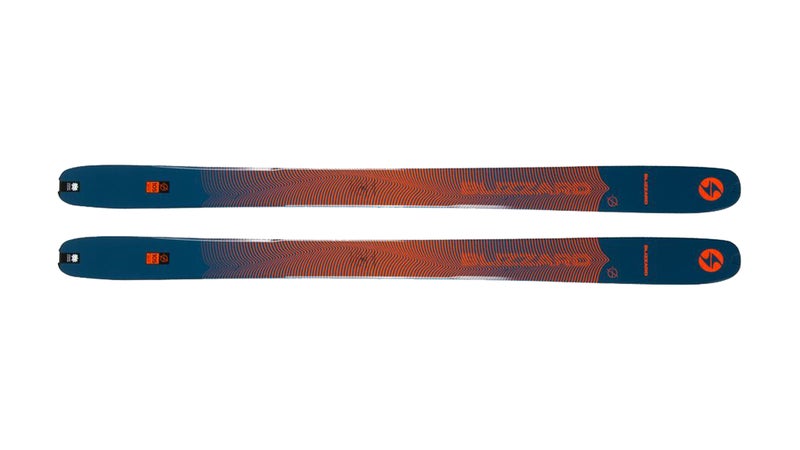
Backcountry: Best for Men
Many of our testers consider Blizzard’s Zero G 108 the best backcountry ski ever made—light enough for long tours, but nearly as rippable as a resort ski. The new Zero G 105 is, incredibly, better, thanks to a three-dimensional carbon frame that shaves 200-plus grams from the pair. A deeper sidecut (the tip and tail flare a bit more) makes for a more playful ride on spring corn and still manages a 23-meter turn radius, though it did feel hooky in breakable crust and wind-affected snow. The flex pattern is smooth and consistent—which is nice, since in the backcountry you should be paying as much attention to your surroundings as to the sweet turns you’re getting. Overall, for the weight (1,530 grams), the new 105 offers the best downhill performance of any ski on the market. “It’s noticeably lighter on the up track,” said a tester, “and though it doesn’t carve quite as nicely on groomers, it performs better than anything on the way down in the backcountry conditions it was designed for.” 134/105/120

